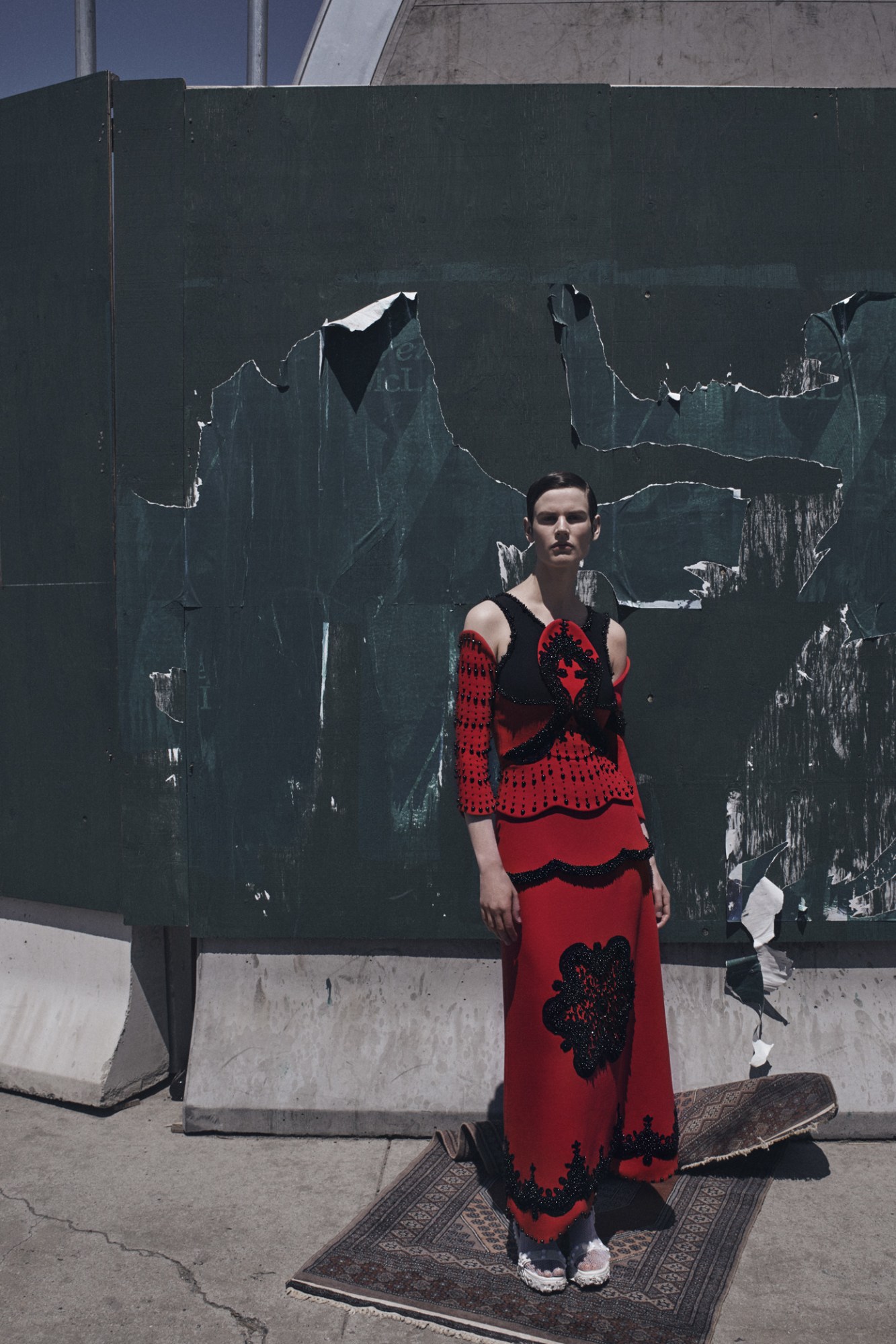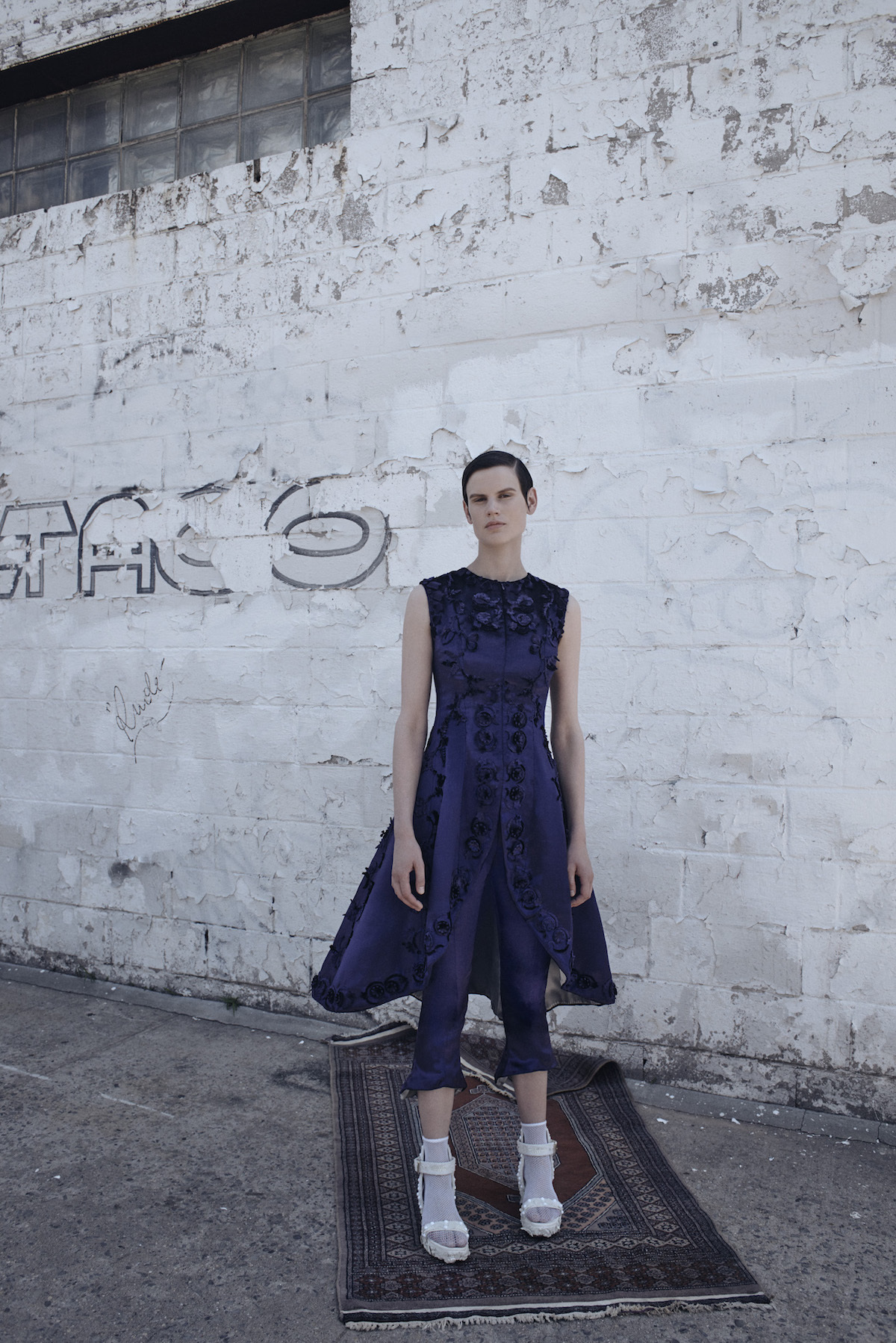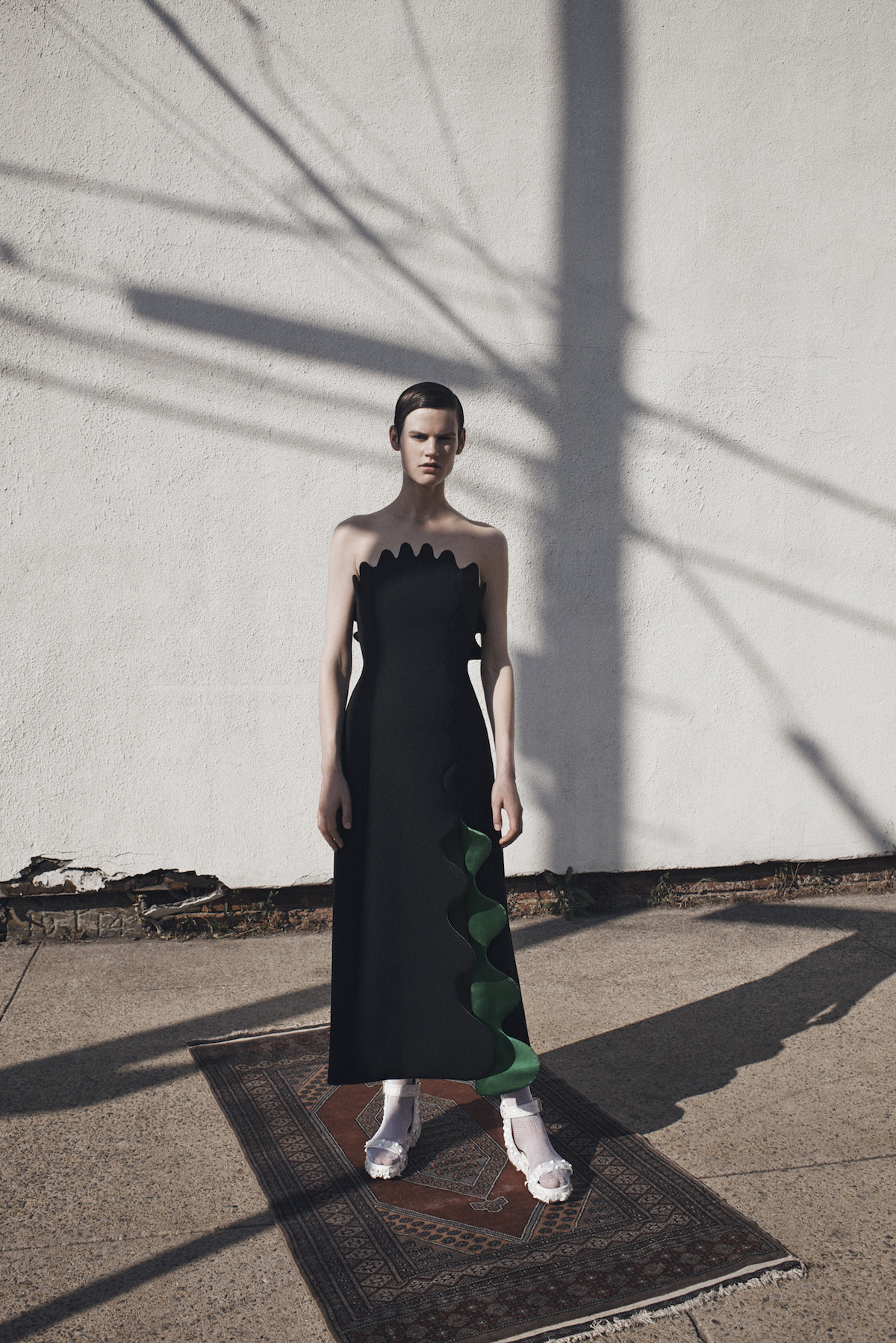Yacine Aouadi might only have three collections under his belt, but the French-Algerian Marseille-born couturier is taking the world of artisanal savoir-faire by a storm. His eponymous label, launched in 2015 after five years working under Olivier Rousteing at Balmain, reconciles past and present, haute couture and sportswear, East and West.
After showing a collection exploring cultural diversity in Europe during couture fashion week, Aouadi is currently presenting a one-man show of his work at Marseille’s majestic MuCEM (Le musée des civilisations de l’Europe et de la Méditerranée), adding multiculturalism and modernity to haute couture.

French fashion is classically centralized around Paris but you are a proud Marseillais. What do you think your city has taught you?
I left Marseille ten years ago to work in Paris but the city still has still an impact on me. It is the polar opposite of Paris, it is sunny, slow paced, Mediterranean — which also means local notions of femininity are radically different. Women here show more skin, make an effort, and want that to be visible. They are never proudly effortless like Parisiennes.
This has made me work around what sexiness is, even when designing a full length black dress. It needn’t be austere, you can subtly add sheer layers and show skin where you wouldn’t expect. The most important aspect is that sexy needn’t be synonymous with vulgar or obvious, it’s a subtle attitude that evolves with its time.
You’ve only got three collections under your name and already have a museum show — isn’t that a tad early?
It definitely felt early, yes, but it’s not a retrospective in any way. It split in two parts. The first, at the MuCEM, presents my first collections on wooden mannequins, surrounded by videos of their influences — from Madonna’s “Frozen” video to extracts of Peter Greenaway’s The Pillow Book. The second, held at nearby Château Borely consists of fashion archives — ranging from Alaia to Chanel, Dior, Guy Laroche — that I was invited to style into contemporary outfits.
It’s part of an incentive by the organization La Maison Méditerranéenne des Métiers de la Mode and their program #OPENMYMED that seeks to highlight creation around the Mediterranean region in the shape of shows and workshops. As for my relation to a museum format, the idea is that have a conversation between two generations and two worlds, a classical history of fashion, and a young, multicultural vision of style.

Your third collection, presented during Haute Couture at the Grand Palais, also addresses diversity in Europe…
Yes, its core influence was the Mosque-Cathedral of Córdoba in Spain, an ancient place of worship both for Muslims and Christians. I wanted to imagine garments that reflected that peaceful multi-ethnic environment. Tunics were inspired by a knight’s breastplate, a nudge at Europe aristocratic heritage. I used liturgical colors, organic embroided elements reminiscent of religious ornaments by Maison Lemarié, graphic mosaic impressions, arabesque motifs. I imagined a woman hailing both from the East and the West, from yesterday and today, wearing dynamic couture made with hyper-modernized craftsmanship. I feel fashion can walk on bridges that society has deemed unsafe, and deliver a message of peace and universalism.
Along with Alaïa and Hedi Slimane, you are one of the few designers of Arabic origin in France. Why is that — and has it affected your work?
The history of haute couture is part and parcel of French culture; it’s a proud, protected one that isn’t easy to challenge and shake up, and definitely not the easiest route to take. Being from a different background pushes you to be instinctively tolerant. It’s not a marketing thing, but something that you almost do unconsciously, in the way you think about women, culture, identity: you want to find a place where everyone and everything can cohabit.
As for myself, I’ve found that customers from the Gulf are always happy to find out where I am from — I’ve come to represent a bridge between these two worlds, which is more that I could I have ever hoped for.

Credits
Text Alice Pfeiffer
